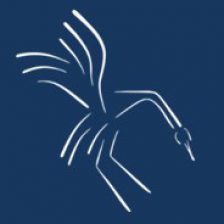The Antioch Project, comprising a series of excavations at this great imperial city in southeastern Turkey in the 1930s, was among “the most ambitious, and altogether problematic, excavations ever undertaken,” says Andrea De Giorgi, an Associate Professor in the Department of Classics at Florida State University. Working in the city of Antakya (or Antioch as English speakers called it at the time), the excavators recorded a vast number of images, architectural plans and other data, which CRANE’s partner, the OCHRE Data Service, had already made available through its institutional partner, the Oriental Institute of the University of Chicago. But De Giorgi says the data was never organized with any kind of meaningful context: “They’re essentially JPEGs, just very static images that don’t really communicate in terms of where they were found and why they were situated there.” This led De Giorgi, working with CRANE’s Stephen Batiuk and Julia Gearhart at Princeton University, to initiate the Antioch Digital Companion Project, which aims to help people navigate all this data.
The idea for the Antioch Digital Companion Project came about after De Giorgi co-authored the book Antioch: A History with A. Asa Eger, an Associate Professor of the Islamic world at the University of North Carolina at Greensboro, with maps created by Stephen Batiuk. De Giorgi says they were impressed by the way CRANE’s system could be used to “document the modifications of the city from the Hellenistic foundation to the Ottoman era,” and he, Eger and Batiuk came up with the idea to do the same thing on a larger scale, allowing the user to see where every item stands in relation not only to the topography of the area, but the topography of the excavations.

With the help of CRANE, De Giorgi continues, the Digital Companion Project was able to take a bare piece of data like an architectural plan, and present it “basically re-contextualized. It’s not just floating, it’s not just an image of a building; we have fully appropriated and reinserted it into an image of the territory as it was after the excavation.” This is possible because of CRANE’s system; “thanks to GIS processing, and thanks to aerial photographs and thanks to remote sensing,” De Giorgi says, it’s possible to show “the correlation between the ancient landscape and the way the terrain looks today.”
Now that the Digital Companion is almost finished, De Giorgi says they will move on to the nearby Mediterranean coast, where the original Antioch Project ventured for some unfinished expeditions, and use these tools to create a similar resource. De Giorgi is enthusiastic about CRANE’s ability to help them take raw, unprocessed information and give it an intelligible shape: “We would like to go back to these fragmented narratives,” he explains, “and we would like to try to piece them together.”
Written by Jaime Weinman.
